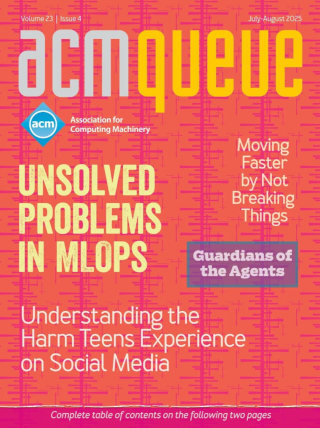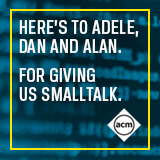In this video interview conducted by Terry Coatta, Kate Matsudaira discusses key architectural choices in the design of systems and data partitioning.
Qian Li, Peter Kraft - Transactions and Serverless are Made for Each Other
Database-backed applications are an exciting new frontier for serverless computation. By tightly integrating application execution and data management, a transactional serverless platform enables many new features not possible in either existing serverless platforms or server-based deployments.
Pat Helland - Identity by Any Other Name
New emerging systems and protocols both tighten and loosen our notions of identity, and that’s good! They make it easier to get stuff done. REST, IoT, big data, and machine learning all revolve around notions of identity that are deliberately kept flexible and sometimes ambiguous. Notions of identity underlie our basic mechanisms of distributed systems, including interchangeability, idempotence, and immutability.
Raymond Blum, Betsy Beyer - Achieving Digital Permanence
Today’s Information Age is creating new uses for and new ways to steward the data that the world depends on. The world is moving away from familiar, physical artifacts to new means of representation that are closer to information in its essence. We need processes to ensure both the integrity and accessibility of knowledge in order to guarantee that history will be known and true.
Graham Cormode - Data Sketching
Do you ever feel overwhelmed by an unending stream of information? It can seem like a barrage of new email and text messages demands constant attention, and there are also phone calls to pick up, articles to read, and knocks on the door to answer. Putting these pieces together to keep track of what’s important can be a real challenge. In response to this challenge, the model of streaming data processing has grown in popularity. The aim is no longer to capture, store, and index every minute event, but rather to process each observation quickly in order to create a summary of the current state.
Kate Matsudaira has just recently made a foray into novel territory as founder of her own company Pop Forms. Prior to that she worked in engineering leadership roles at companies such as Decide, SEOmoz, and Amazon. Her technical experience spans a wealth of areas, but she has consistently been involved with the construction of high performance distributed systems and systems addressing data collection and analysis. Kate is also well-known for her blog on which deals with issues in leadership and management. In this video, she discusses her experience in building and scaling out systems that collect and analyze large volumes of data. She covers key architectural choices in the design of these systems, delving into data partitioning in particular.
Comments
(newest first)
Love the video!! Much more engaging than just text. And unlike my peer who previously commented, I love the editing! Way to make a talking-head video visually engaging. :-D (I suppose I might cut it down to 10m if it were me, but otherwise great)
This may be the most irritating video I've ever seen! Way too much cutting and hand-waving, which is very distracting from the interview message.



